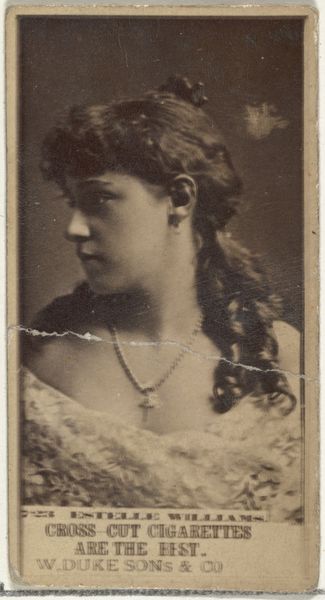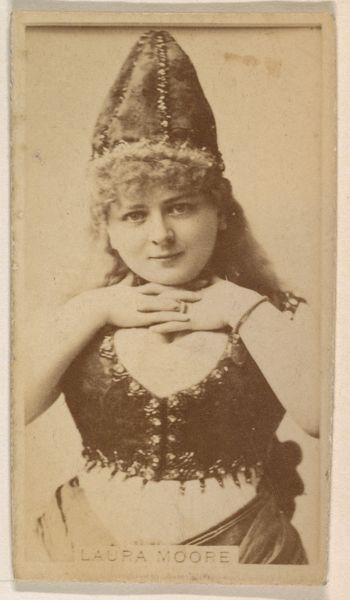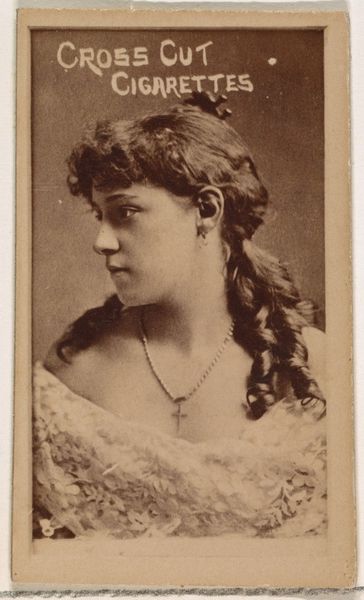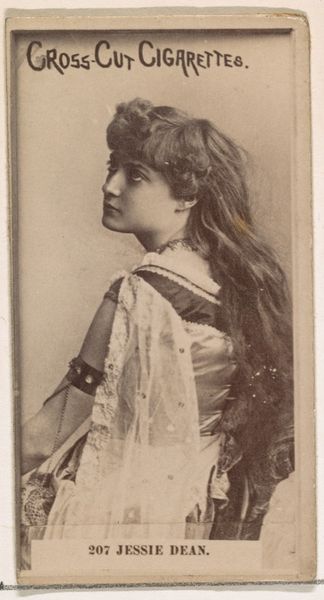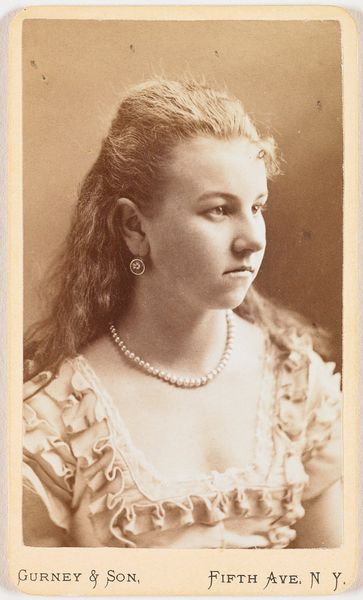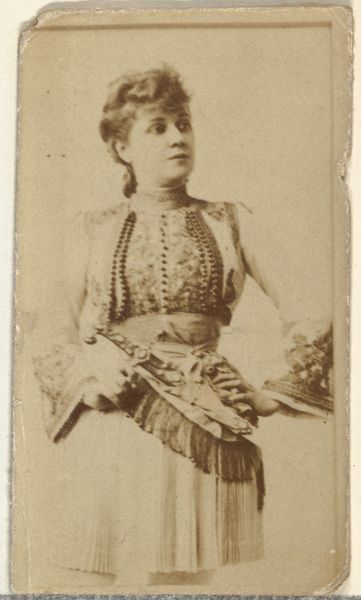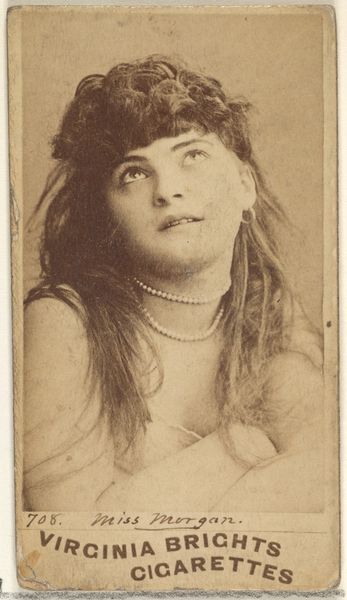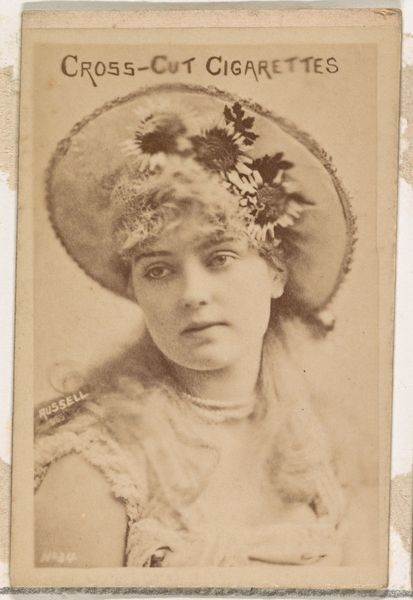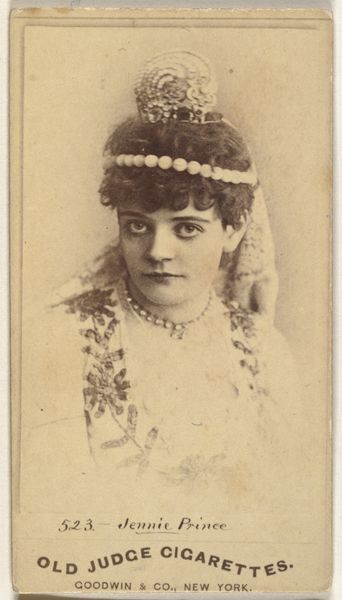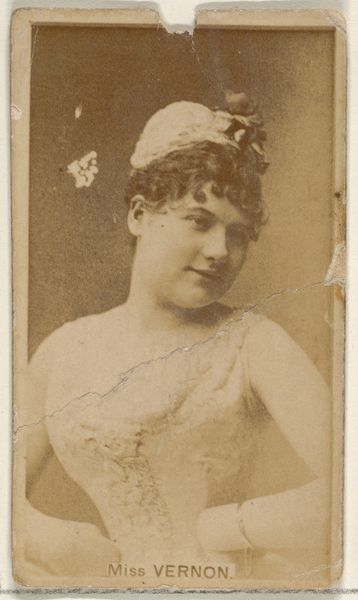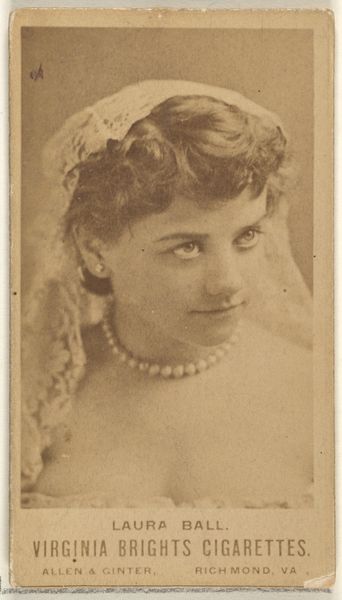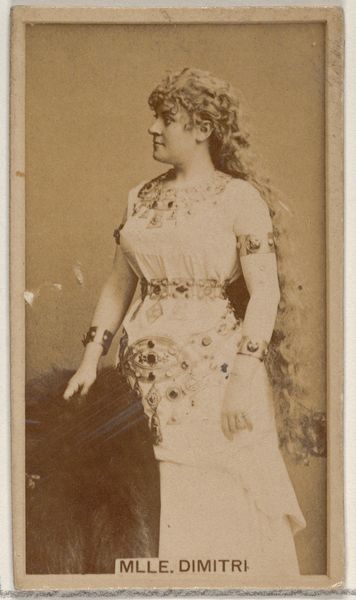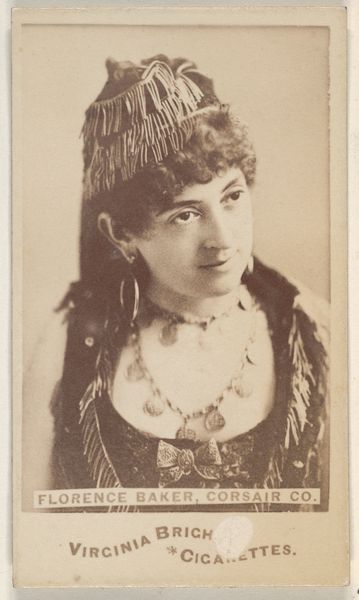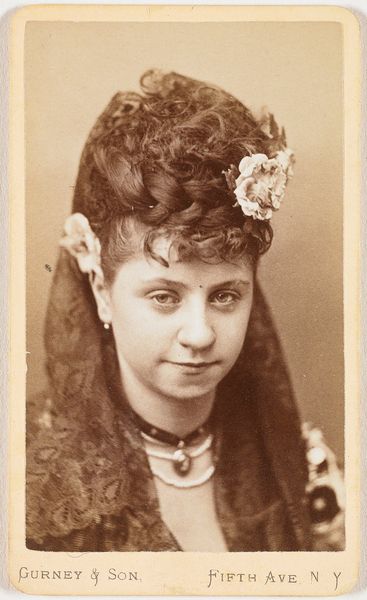![Untitled [portrait of an unidentified actress] by Jeremiah Gurney](/_next/image?url=https%3A%2F%2Fd2w8kbdekdi1gv.cloudfront.net%2FeyJidWNrZXQiOiAiYXJ0ZXJhLWltYWdlcy1idWNrZXQiLCAia2V5IjogImFydHdvcmtzLzI0OGRhOTU0LWQwNDItNGZlMy1hYTY0LTVlYmY3Yjc3OWU3MS8yNDhkYTk1NC1kMDQyLTRmZTMtYWE2NC01ZWJmN2I3NzllNzFfZnVsbC5qcGciLCAiZWRpdHMiOiB7InJlc2l6ZSI6IHsid2lkdGgiOiAxOTIwLCAiaGVpZ2h0IjogMTkyMCwgImZpdCI6ICJpbnNpZGUifX19&w=3840&q=75)
Untitled [portrait of an unidentified actress] 1869 - 1874
0:00
0:00
Dimensions: 3 3/4 x 2 5/16 in. (9.53 x 5.87 cm) (image)4 1/8 x 2 7/16 in. (10.48 x 6.19 cm) (mount)
Copyright: Public Domain
Curator: The photograph before us, currently held at the Minneapolis Institute of Art, is an albumen print portrait made by Jeremiah Gurney between 1869 and 1874. The sitter, thought to be an actress, remains unidentified. My first thought is opulence. The cascading pearls, the elaborate hair. It speaks volumes about performance and identity, even without knowing who she is. Editor: I find the almost tangible ambition fascinating—she's performing wealth, class, success in a burgeoning theater world where identities are being crafted, bought, sold… the very fabric of celebrity being woven. The portrait embodies those transformative energies, where one could self-fashion into something entirely new. Curator: Right, there's a studied elegance in the details, isn’t there? Gurney has really captured that "look." And in such incredible detail for a photographic portrait from this era—the texture of her curls, the almost defiant gaze... The softening effect from the albumen print lends a certain romance to the scene, despite the very composed posture of the subject. Editor: Absolutely. Though it may have aimed at capturing timeless beauty, what really stands out is how the portrait, itself, tells a story about women artists navigating restrictive environments, the gilded cage, the beauty standards… This albumen print whispers those intersectional power dynamics. Curator: The use of light in Gurney's composition seems to be doing quite a bit of storytelling on its own. Light defines the volume of her hair and illuminates that knowing gaze, leaving so much in shadow. I like that ambiguity... it hints at an inner life not entirely for public consumption. Editor: The shadows, I feel, serve to both romanticize and somewhat obscure—what are we not meant to see? We look back on such portraits with 21st-century eyes now and reflect on how much women’s labor and social maneuvering contributed to making such public performances possible in those historical and economic realities. Curator: Seeing it this way makes the absence of her name almost deafening, a gap in history we must consider. But, there is, undeniably, some force there that holds the viewer still, that asks to be engaged even now. Editor: Exactly. To truly consider works like this, beyond technique and beauty, we must really ask, what hasn’t been photographed? Who is conspicuously missing?
Comments
No comments
Be the first to comment and join the conversation on the ultimate creative platform.
